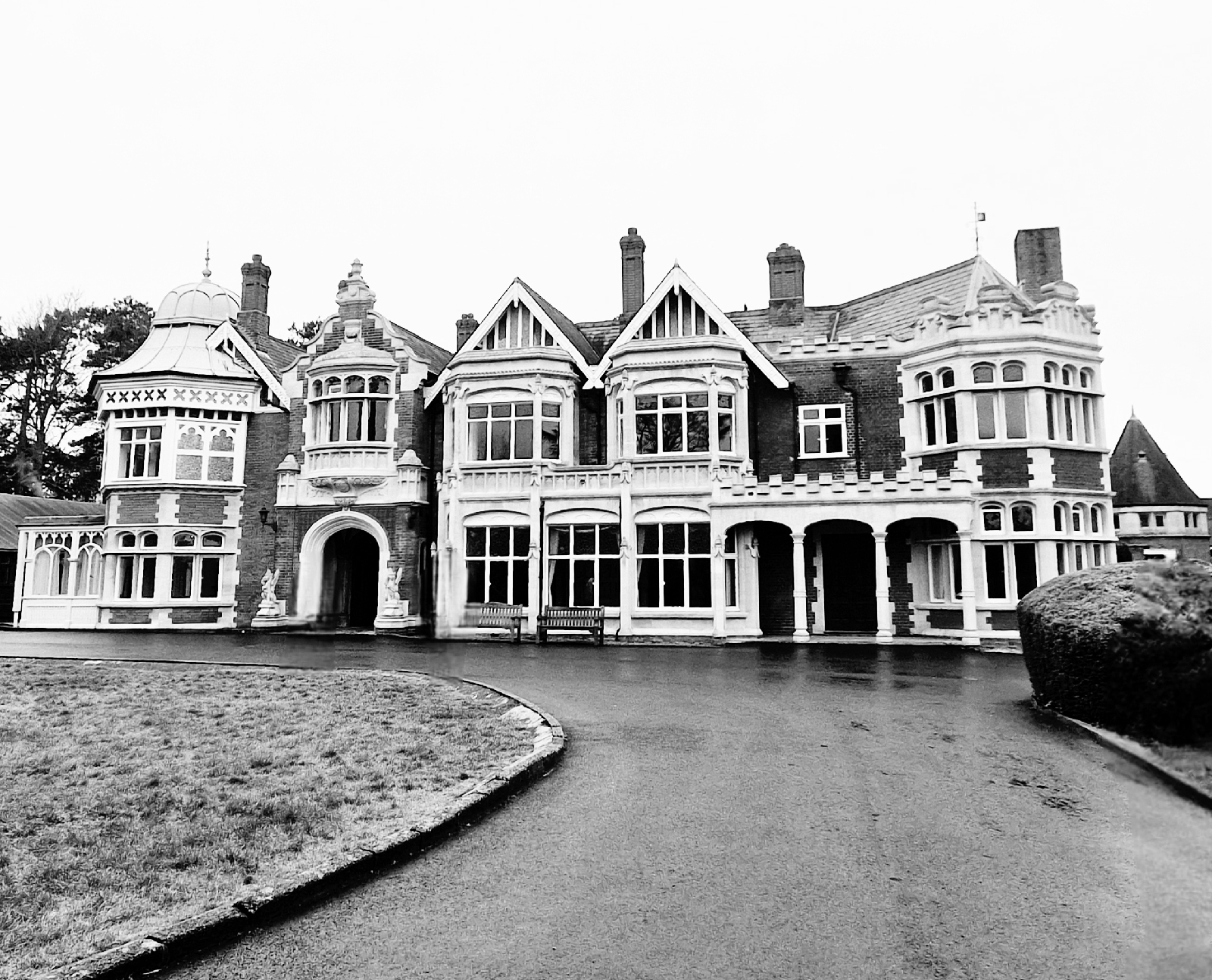Hello, you lovely people. I hope you are all feeling well and looking forward to our next delve into the history of Bletchley Park.
Today I'm going to focus on the Leon family, Herbert Leon had the most influence over Bletchley Park prior the Second World War.
Image of Herbert Samuel Leon
In 1883 Herbert Samuel Leon purchased Bletchley Park in 1883 and expanded the building that had been on the site during Samuel Lipscomb Seckham ownership. It is believed that Seckham had not completed the house when he decided to sell it by auction.
Herbert Samuel Leon (11th February 1850- 23rd July 1926) was an MP for Buckingham representing the Liberal Party and a financier. He had several homes but this was his main residence.
Leon donated land for public and educational use including the Leon Recreational Ground as a public park in Fenny Stratford and Bletchley. He also donated land in Bletchley for schools for the children of the Lakes Estate.
Herbert Leon was Jewish and although the family was not particularly religious, considering Bletchley Park became immensely important in defeating the Nazis during the Second World War, I find this fact rather poignant.
Leon made many alterations and expansions to the mansion using a mix of styles, Victorian Gothic, Tudor and Dutch Baroque. The work was ridiculed by American architect Landis Gore. He called the house an a ' maudlin and monstrous pile'. I however disagree and find the house enchanting. I enjoy the different aspects from the stained glass ceiling to the staircase. I will go into more details regarding the house in another blog.
Landis Gore.
Landis Gore(31st August 1919-18th March 1991) was connected to Bletchley Park by his work on operation Ultra during World War 2. More about that later. He was a modernist architect from Ohio graduating at Harvard before serving in the war in 1942.
More about Landis Gores here.
The Leons
Herbert married his first wife Esther Julia Beddington in 1873 with which he had two children, Mabel Julia Haldin( 24th April 1874-6th April 1970) and Sir George Edward Leon 2nd Baronet(7th May 1875-14th May 1947) before her premature death on the 15th May 1875 aged only 22, tragically, just a week after giving birth to her daughter.
Herbert went on to marry Fanny Higham in 1880. He had a further daughter in 1880 called Catherine Elizabeth Leon with Fanny.
There are some wonderful photographs displayed on boards in the mansion at Bletchley Park today showing the family enjoying a picnic in the grounds with the house in the background.
The family famously had fox hunting on Boxing Day after the families Christmas celebrations the day before. The gardens where covered in daffodils followed by intense red tulips in the Spring. The family employed a huge amount of staff including a staggering forty gardeners.
This site may be of interest if you would like to know more about the staff at Bletchley Park during this period.
I found the site phenomenal and it really helped to bring the place to life. History often forgets the people downstairs who without which the family and house could not function. The staff were and are the beating heart of any estate, but particularly in the past where modern conveniences are yet to exist.
Could you even begin to imagine living here as a servant or even as one of the Leon family members? I often try and time-travel in my mind, trying to recreatewhat it would have been like in my mind. If only we could really time travel to really see what it was like, rather than the rather glamourised and sanitised ideas that we have today. I imagine that life was hard for the staff, however well they were treated by the family. I doubt many of us could sustain the life they had to. What do you think? Please comment below.
This place is wonderful but I imagine the upkeep was immense.
Herbert Leon was well known in the area and donated land for both public parks and for educational uses like building schools. He has a school and recreation ground named in honour of his philanthropy.
The estate stayed in the Leon family being used as the families primary home until 1937. Herbert Leon died in 1926 and the house remained his wife's Fanny Leons (nèe Higham) home until she joined him in 1937.
The mansion as it stands today is very much thanks to Herbert Leon. It was he who has had the most influence of the architecture and style. I personally think it is stunning. My favourites being the staircase and the stained glass ceiling, more about that in another blog.
Here is a quick preview of the stained glass ceiling and the stair taken by myself last week.
The photos do not do them justice.
In the next blog I will be starting to explore Bletchley Park during the Second World War. Arguably it's most important role throughout its entire history. From its royal connection to it's remarkable work in defeating the Nazis. The impact Bletchley Park and the people that worked here is truely astonishing.
There is very interesting article here if you would like to learn more.









